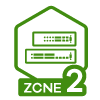What is the Smart Antenna and how does it work?
Feature Introduction
Smart Antenna Technology is designed to enhance WiFi performance, especially in complex environments. It plays a crucial role in modern wireless communication systems by addressing several challenges that conventional antenna systems face. This technology is particularly relevant for environments where WiFi performance is critical and can be impacted by various factors like physical obstructions, interference, and high user density.
How Smart Antenna Works
- Client-Oriented Adaptive Antenna: The smart antenna system is adaptive, meaning it can dynamically adjust its radiation patterns to best suit the location and movement of the connected devices. This feature ensures optimal signal quality to each client, improving overall network performance.
- Mitigation of Radio Interference: By adjusting its radiation pattern, the smart antenna can mitigate radio interference. This capability is crucial in crowded or complex environments where multiple devices might interfere with each other's signals.
- Increased Coverage: Smart antennas can increase the signal coverage area by focusing the signal strength in required directions rather than dispersing it evenly in all directions. This targeted approach enhances the network's reach and reduces the likelihood of dead spots.
- Interference Rejection: Traditional methods of dealing with co-channel interference (CCI) include reducing the power and channel width, which often leads to coverage issues and lower throughput. Smart antennas, however, can shape their patterns to avoid interference, reducing its impact without compromising on coverage or speed.
- Efficiency and Capacity Enhancement: Smart antennas focus the transmission of the radio signals, thereby increasing the network's capacity. They are also power-efficient, reducing overall energy consumption while maintaining high performance.
- 360-Degree Coverage: Smart antennas distribute the radio pattern evenly, providing 100% coverage around the access point. This feature is a significant improvement over conventional omni-directional antennas, which might have uneven coverage areas.
Smart antennas represent a significant advancement in wireless technology. They offer a solution to the challenges of interference, coverage, and capacity in complex and high-density environments. By intelligently adapting to the environment and client needs, smart antennas provide efficient, reliable, and high-performance wireless connectivity.
More information:
Kay
Categories
- All Categories
- 441 Beta Program
- 2.9K Nebula
- 210 Nebula Ideas
- 127 Nebula Status and Incidents
- 6.4K Security
- 534 USG FLEX H Series
- 338 Security Ideas
- 1.7K Switch
- 84 Switch Ideas
- 1.3K Wireless
- 51 Wireless Ideas
- 6.9K Consumer Product
- 295 Service & License
- 462 News and Release
- 90 Security Advisories
- 31 Education Center
- 10 [Campaign] Zyxel Network Detective
- 4.7K FAQ
- 34 Documents
- 86 About Community
- 99 Security Highlight
 Zyxel Employee
Zyxel Employee





